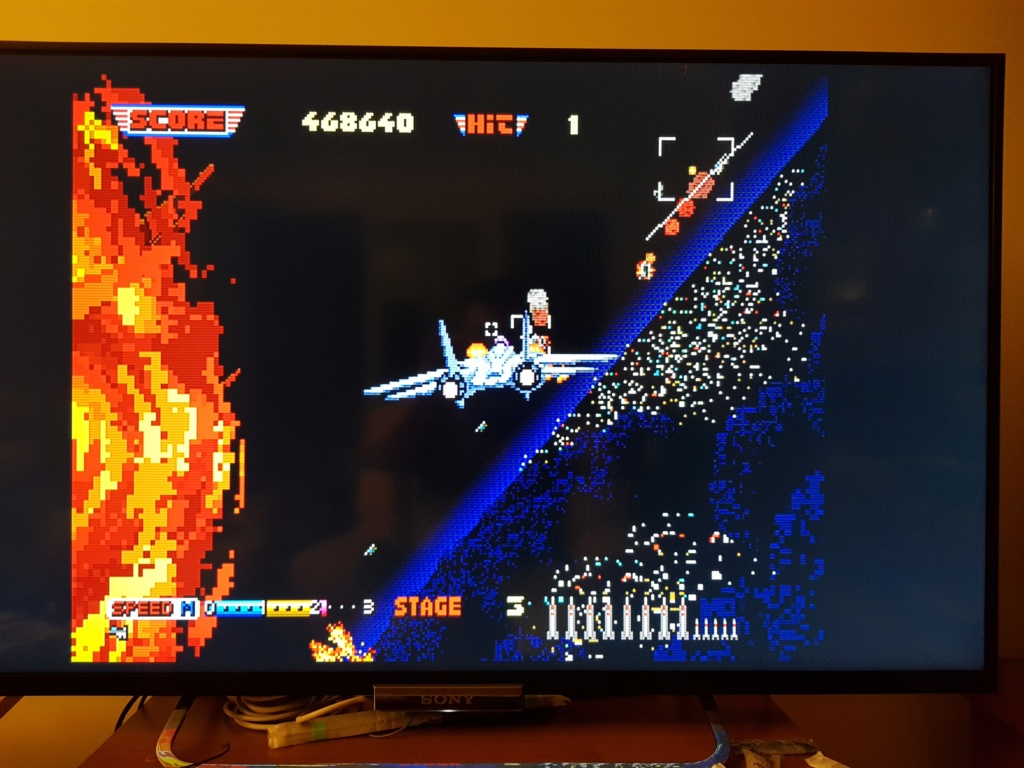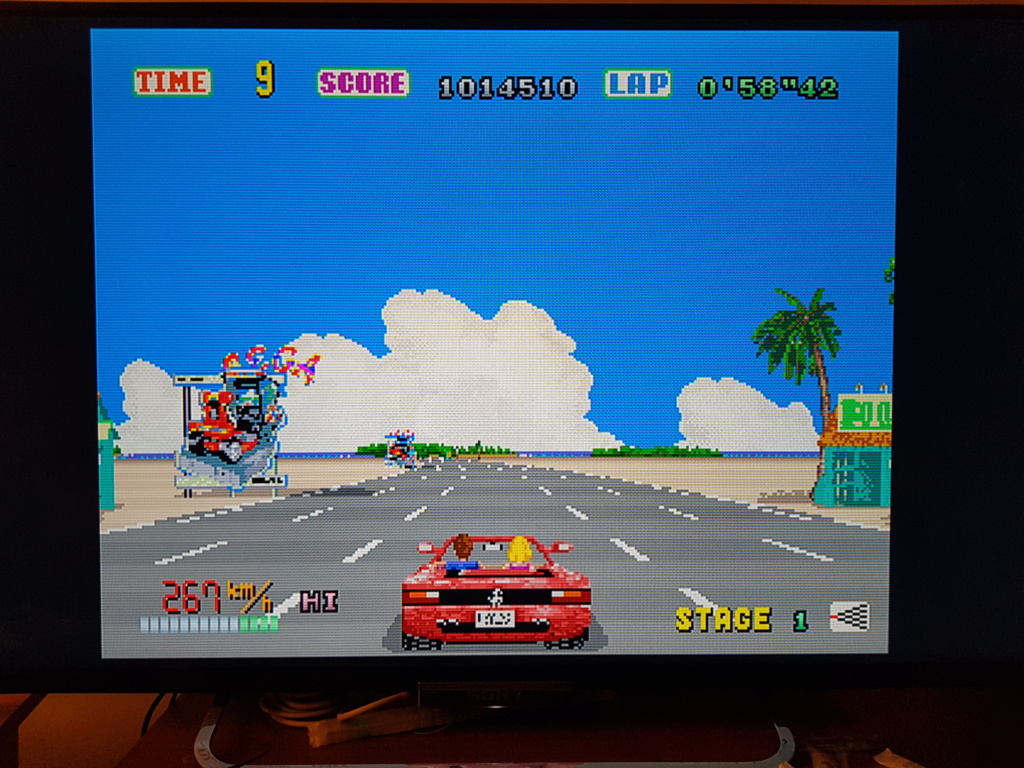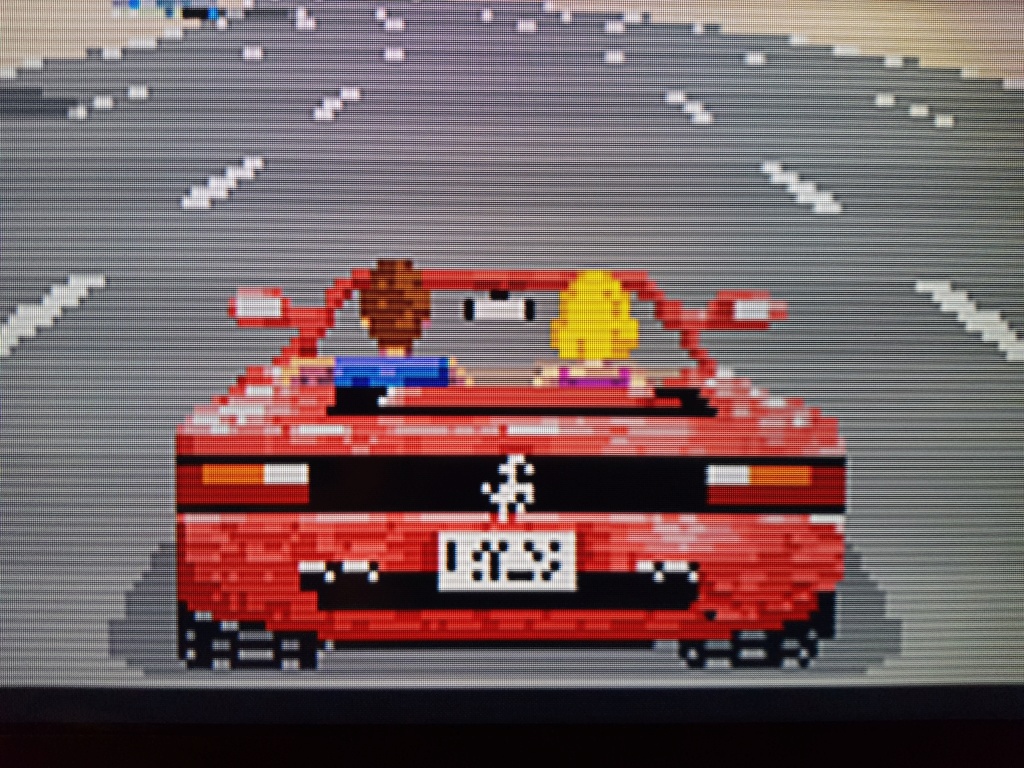nice work @jassin000, got some before/after pics?
You are using an out of date browser. It may not display this or other websites correctly.
You should upgrade or use an alternative browser.
You should upgrade or use an alternative browser.
- Thread starter RGB
- Start date
J
jassin000
I don't have anything handy, but I have both of my cables (new and old) so I could get some side/by/side shots.
The problem with video noise is its most noticeable on solid color backgrounds, hard to see unless under the perfect conditions.
The problem with video noise is its most noticeable on solid color backgrounds, hard to see unless under the perfect conditions.
I like them…Does anybody know where I can get the files to 3D print a cover enclosure for the MWP-606 power supply? Something like this maybe?
https://www.thingiverse.com/thing:2876565
or this
https://www.thingiverse.com/thing:1706456
Thanks!
Would be great to have a "packed" versione of the has (with all included into an enclosure).
Smart. I always split audio. No good reason for me to ever bring it in through scart because I use pvms with a set of external speakers with a sub for each monitor. Only reason would be if you happen to have a tv with a scart port and good speakers.
You and me both lol, can you share the video link ?I just saw SmokeMonster's video on Superguns vs Consolization again and I desperately need the HAS Supergun ....
I am glad I discovered this community.

AlxUnderBase
Enlightened
Here : 25:17 . Cheers !You and me both lol, can you share the video link ?I just saw SmokeMonster's video on Superguns vs Consolization again and I desperately need the HAS Supergun ....
I am glad I discovered this community.

J
jassin000
No before pic, but emulator levels of sharpness going on (aka more shots from my redux HAS->OSSC SCART cable) after.nice work @jassin000, got some before/after pics?


Haha remember that lame comic offer on the attract screen?


Yup I've got the reprints...

If you have a printer capable of dual side printing and saddle stapling, all you need are these files.

MK1 Comic
MK2 Comic
FYI the backside page is upside-down and page mirrored, so it will print/assemble correctly on dual sided machines.
Last edited by a moderator:
I've got the original comic for 1 and 2 and the CD from 2.
hey @jassin000 a noob question for you, I have been doing some reserach on OSSC and Framemeister. A lot of people refer to "Framemeister" as an upscalar vs line doubler for OSSC. Does this mean that with "Framemeister" the image becomes softer as it is displayed on HDTV ?
SelfDeniedHoarderz
Professional
OSSC isn't a line doubler per say, it's a scan converter which is also a line doubler somewhat. A line doubler takes a 240p image and effectively just duplicates them to make a 480p image. This doesn't require any intricate math or anything crazy so it requires almost no buffer and has almost no latency impact. A scan converter is a line doubler but it also is capable of attempting to convert to 720p as that is a direct integer conversion from 480p which mostly doesn't require a buffer either. The timing however isn't normalized so a lot of displays don't like the 720p signal as it is not 60hz.hey @jassin000 a noob question for you, I have been doing some reserach on OSSC and Framemeister. A lot of people refer to "Framemeister" as an upscalar vs line doubler for OSSC. Does this mean that with "Framemeister" the image becomes softer as it is displayed on HDTV ?
Framemeister or XRGB-Mini is an upscaler where it takes a 240p, 480i or 480p input and can use integrated ics to do a smoother conversion to hd resolutions as 1080p doesn't have a common denominator like 480/720p. It's also much, much easier to use in comparison to OSSC however there are a ton of profiles made now for OSSC which isn't as big of an issue now.
AlxUnderBase
Enlightened
Also OSSC in comparison with Xrgb Mini is a lagless device and this is most important IMOOSSC isn't a line doubler per say, it's a scan converter which is also a line doubler somewhat. A line doubler takes a 240p image and effectively just duplicates them to make a 480p image. This doesn't require any intricate math or anything crazy so it requires almost no buffer and has almost no latency impact. A scan converter is a line doubler but it also is capable of attempting to convert to 720p as that is a direct integer conversion from 480p which mostly doesn't require a buffer either. The timing however isn't normalized so a lot of displays don't like the 720p signal as it is not 60hz.hey @jassin000 a noob question for you, I have been doing some reserach on OSSC and Framemeister. A lot of people refer to "Framemeister" as an upscalar vs line doubler for OSSC. Does this mean that with "Framemeister" the image becomes softer as it is displayed on HDTV ?
Framemeister or XRGB-Mini is an upscaler where it takes a 240p, 480i or 480p input and can use integrated ics to do a smoother conversion to hd resolutions as 1080p doesn't have a common denominator like 480/720p. It's also much, much easier to use in comparison to OSSC however there are a ton of profiles made now for OSSC which isn't as big of an issue now.

You’re right, but linedoubler is commonly used (or misused if you prefer) for OSSC in order to differentiate it from a full upscaler like XRGB.OSSC isn't a line doubler per say, it's a scan converter which is also a line doubler somewhat.
Essentially XRGB=full framebuffer, it digitizes and memorizes an entire screen so that it can process the image (scale, zoom, adjusting framerate, whatever) as you want, obviously adding lag.
OSSC=small line buffer, it digitizes and memorizes a few lines so it can do few processing, essentially repeating (doubling or x3, x4 and even x5) lines or adding scanlines, but it doesn’t add many lag, essentially few lines, nothing you can notice.
Incredibly tough, RedGuy, the clever mind behind SD2SNES SuperFX and SA-1 implementation, was able to use this small line buffer in order to implement scaling filters like Scale2X!!!
Regards
Locutus73
I actually mailed away for this thing and I’m pretty sure I have it in one of my old boxes of comics that I haven’t even opened and looked at in 15 years.No before pic, but emulator levels of sharpness going on (aka more shots from my redux HAS->OSSC SCART cable) after.nice work @jassin000, got some before/after pics?Haha remember that lame comic offer on the attract screen?


Yup I've got the reprints...

If you have a printer capable of dual side printing and saddle stapling, all you need are these files.
MK1 Comic
MK2 Comic
FYI the backside page is upside-down and page mirrored, so it will print/assemble correctly on dual sided machines.
J
jassin000
Me too!I've got the original comic for 1 and 2 and the CD from 2.

But only my CD is "real" my comics are scanned reprints of the originals.
Yup nailed it!Essentially XRGB=full framebuffer, it digitizes and memorizes an entire screen so that it can process the image (scale, zoom, adjusting framerate, whatever) as you want, obviously adding lag.
The OSSC hasn't got a fully featured/functional framebuffer, this is why it's often necessary to pair it with a DVDO iScan.
The DVDO's framebuffer is used to change the original wacky sync rate of some arcade boards to a stable/pure 60.0hz.
And to add at least for clarification sake - if your display does not like the 720p signal coming from OSSC and end up using a video processor such as the DVDO iScan there will be latency introduced however it still won't be as great as xrgb-mini.
Please don't repeat these numbers as factual as it's all going off memory and quite likely inaccurate but you're looking at something like 6ms latency with an iScan vs 15ms latency with a xrgb-mini.
Please don't repeat these numbers as factual as it's all going off memory and quite likely inaccurate but you're looking at something like 6ms latency with an iScan vs 15ms latency with a xrgb-mini.
J
jassin000
Right, and it is for this reason I only recommending adding the DVDO if you simply can't get your monitor to display without it and changing monitors isn't an option.And to add at least for clarification sake - if your display does not like the 720p signal coming from OSSC and end up using a video processor such as the DVDO iScan there will be latency introduced
It also needs to be pointed out, that when you add the DVDO to the output chain you'll lose the ablity to display 5x @ 1600x1200.
This is because the DVDO is strictly a 1080p (1920x1080) device, locking to you the (inferior) cropped 5x @ 1920x1080 mode.
For something like MK1/2 (wacky Midway boards) this is a non issue for two reasons...
- Only 3x mode is compatible (so you'll never get 5x mode to even work)
- No HD TV (in I assume the WORLD after testing a great many) will lock that crazy ass original sync @ 3x (54.2Hz or something, I'll get a screen shot of the OSSCs LCD display)
Last edited by a moderator:
For me the most feature for me is the low lag 2ms, + 15ms from my HDTV (Sony KDL42W653) I have one frame lag....it's closed perfection...But my HDTV dont like exotic res from OSSC, up to 480P, so I have a very nice and sharp picture, from my sega saturn:







